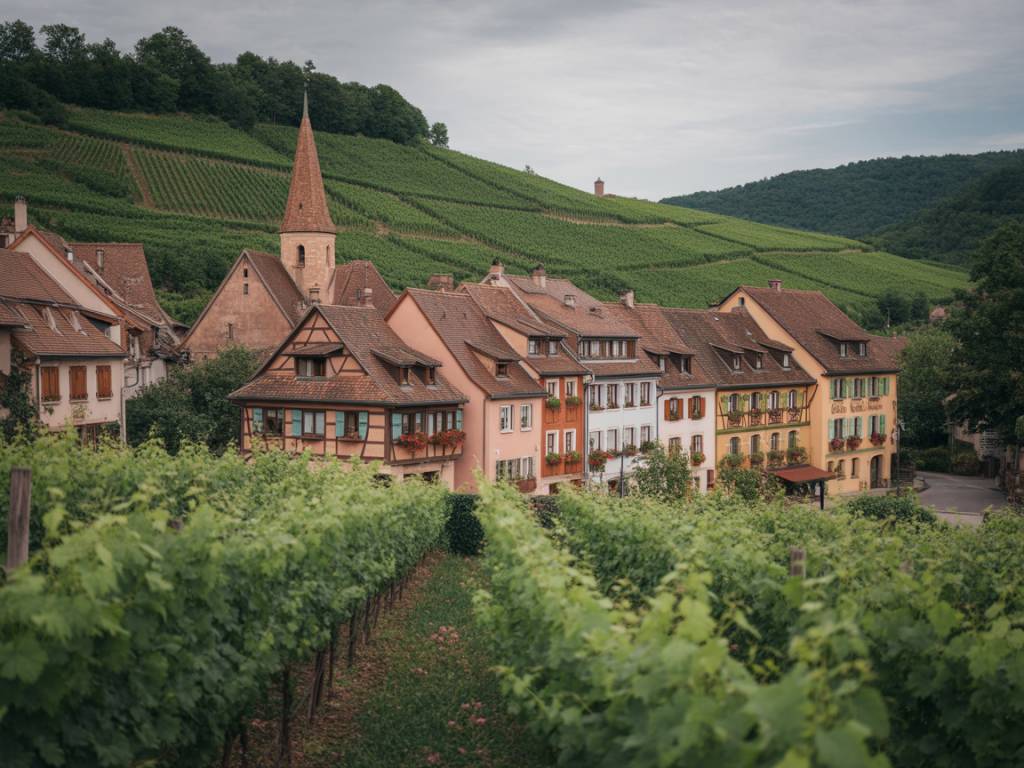A Journey Through Alsace’s Most Beautiful Villages
Alsace is one of those rare regions that seems to exist in a fairytale. Nestled between the Vosges mountains and the Rhine River in northeastern France, it is a blend of French charm and German heritage, which you can see, feel, and taste. Half-timbered houses adorned with cascading geraniums, winding cobbled streets, picturesque town squares, and a wine route that rivals the best in Europe—Alsace invites you to slow down and savor every moment.
During my recent travels through this wonderfully preserved region, I was swept away by its beauty, diversity, and authenticity. From medieval villages draped in flowers to rolling vineyards producing exceptional white wines, Alsace gave me a taste of the good life—au naturel. Here, I share with you some of the most beautiful villages worth exploring and how to make the most of your Alsatian escape.
Eguisheim: A Spiral of Color and Charm
If I had to choose a village that captured the essence of Alsace in one frame, it would be Eguisheim. Just a few kilometers from Colmar, Eguisheim has been voted one of France’s Favorite Villages (“Village Préféré des Français”). And it’s easy to see why.
The old town is shaped like a perfect circle, and walking along its concentric cobblestone streets feels like turning the pages of an old storybook. Half-timbered houses painted in an artist’s palette of yellows, blues, and reds line the walkways, each more photogenic than the last.
Don’t miss:
Riquewihr: A Postcard Come to Life
As a journalist who has wandered through countless European towns, I can confidently say that Riquewihr is among the most breathtaking. Nestled among vineyards and surrounded by ancient ramparts, this town looks almost too picturesque to be real. And yet, it’s bustling with life, from wine merchants offering tastings to artisans selling hand-painted pottery.
Riquewihr is one of the few villages to remain largely intact since the 16th century, and stepping inside its fortified walls is truly like stepping back in time.
My favorite experiences here included:
Kaysersberg: A Royal Affair
Kaysersberg, literally meaning “Emperor’s Mountain,” lives up to its noble name. With a stunning setting at the foot of vine-covered hills and dominated by the ruins of an imperial castle, this village marries natural beauty with man-made harmony. As I walked its quiet lanes, I encountered scenic bridges crossing the Weiss River, facades painted with whimsical motifs, and cafés echoing with laughter.
The village gained fame as the birthplace of Nobel Peace Prize laureate Albert Schweitzer, and there is a serene, intellectual energy to the place.
Highlights of my time in Kaysersberg:
Hunawihr: Between Faith and Vines
Just a short stroll from Riquewihr is the lesser-known, but equally captivating Hunawihr. This peaceful hamlet is encircled by vineyards and dominated by a fortified church spire that rises elegantly over the landscape. Fewer tourists come here, which makes it perfect for a tranquil break from the more popular spots. I spent the better part of an afternoon here simply sitting under the plane trees, sipping a dry Pinot Gris and letting time slip away.
Must-see and do:
Bergheim: The Quiet Beauty
Lying in the shadow of its more famous neighbors, Bergheim is perhaps Alsace’s best-kept secret. With its well-preserved city walls, beautiful town center, and impressive floral displays, Bergheim is a peaceful, authentic stop along the Alsace Wine Route. I cherished my time here because it had everything I loved about the region, with none of the crowds.
My recommendations in Bergheim include:
Alsace Wine Route: The Thread Between the Villages
One of the most amazing experiences in Alsace is driving or cycling along the Route des Vins d’Alsace. This scenic 170-kilometer route weaves through rolling hills, sleepy villages, and past vineyards that produce some of France’s most celebrated wines. Whether it’s a citrusy Riesling or a fragrant Muscat, each glass tells a story of the terroir and generations of tradition.
Along the route, stop to:
Best Time to Visit
Every season in Alsace has a unique appeal. Spring and summer transform the villages into floral wonderlands, with colorful displays on every windowsill. Autumn is grape harvest season, when the vineyards turn golden and the atmosphere becomes festive with wine tastings and harvest events. Winter brings the waltz of Christmas markets, most notably in Colmar and Ribeauvillé, where the medieval ambiance adds a dash of magic.
Personally, nothing compares to the quiet beauty of early autumn, where you can still enjoy the warm sun, see the vineyards in full transformation, and sip seasonal wines without the rush of summer tourists.
Getting There and Around
The closest major airport is in Strasbourg, though Basel-Mulhouse and even Zurich are manageable gateways. Renting a car is the best option for exploring at your own pace, though regional trains and buses will connect you to major villages if you prefer not to drive.
For those seeking a slower rhythm, I highly recommend the cycling paths that crisscross the vineyards and link one village to the next. You’ll find yourself stopping every few minutes—not because it’s difficult, but because the views demand it.
Alsace is more than a destination—it’s a sensory experience. The fragrances of the vineyards, the intricate details on ancient doors, the warmth of a local winegrower sharing their story—these are the moments that stay with you. My journey through Alsace changed the way I travel. I hope yours will be no different.
